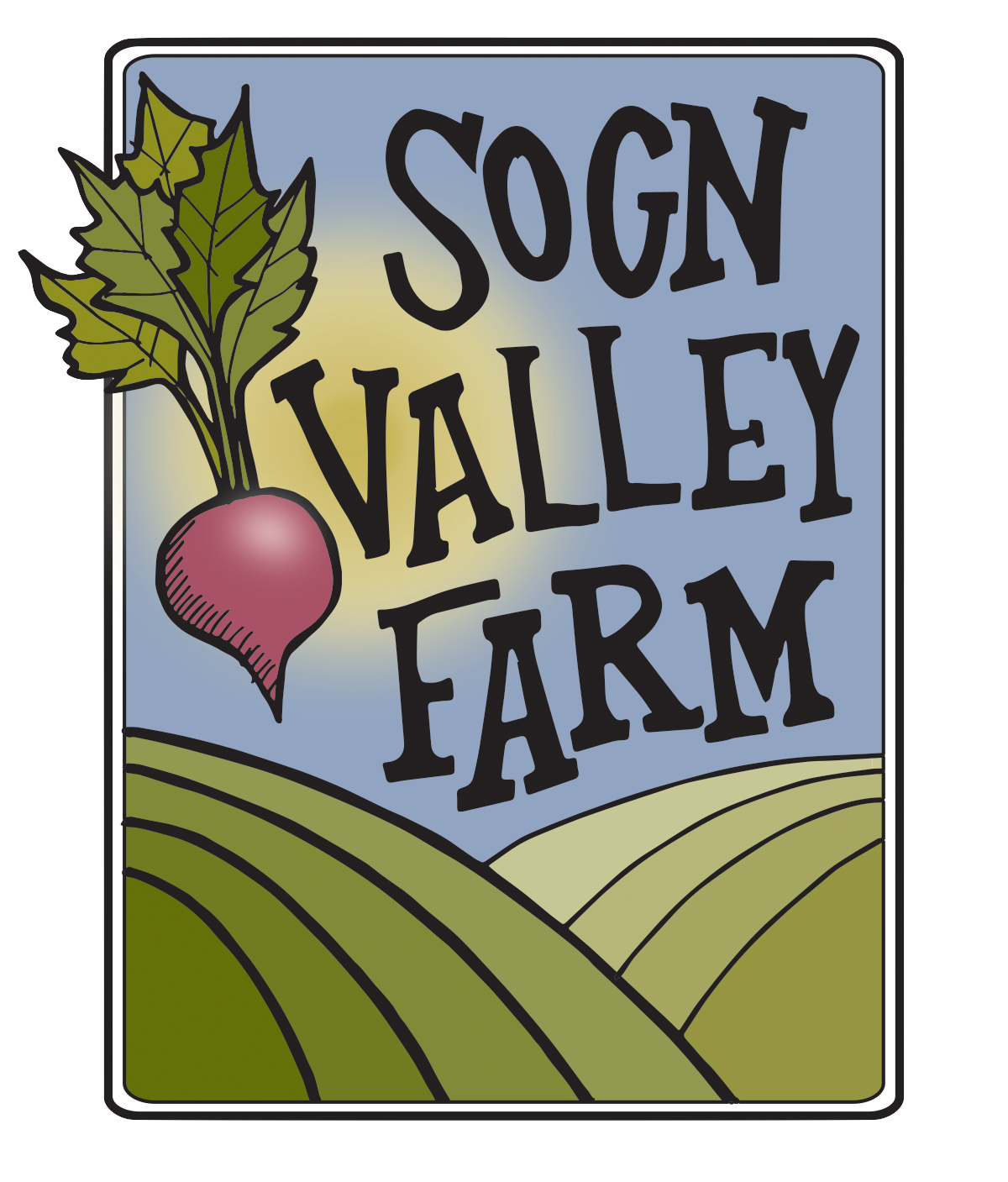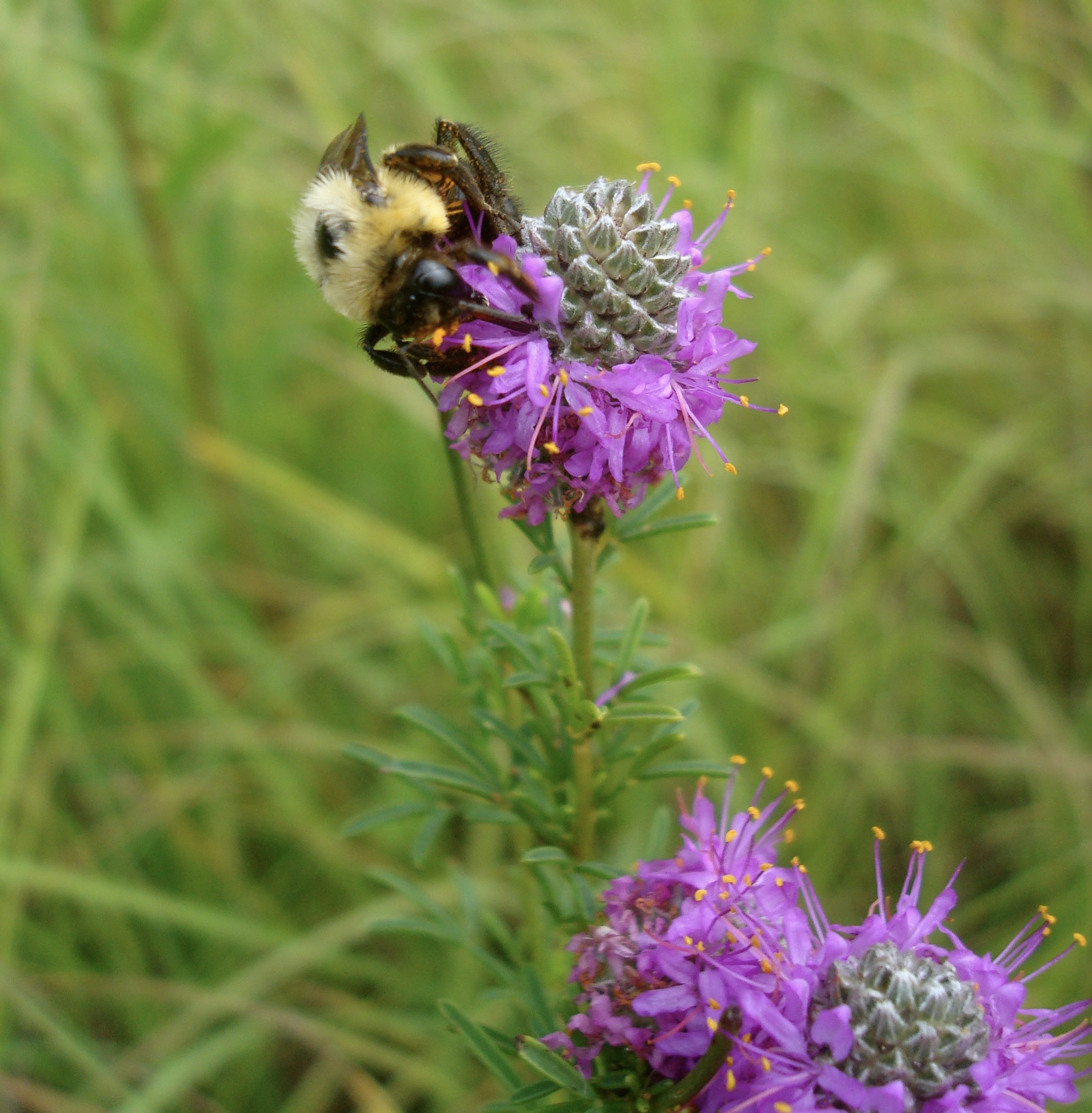Allow me to introduce myself. I’m Karin, Dana’s wife, and I represent the “other half” of Sogn Valley Farm. You haven’t heard much from me yet, though I show up occasionally in photos. I’m introverted, and I prefer to labor quietly behind the scenes rather than take center stage. Still, I think a little background about myself and my “half” of the business would be more than timely right now!
I am a conservation biologist by training, and I have a fascination with all things related to plant-pollinator relationships. I do this type of work for a living off the farm, but I’m interested in plant-insect interactions on our farm, as well. In particular, I have a great affection for bees, in no small part because they are critical for sustainable food production. Animals (bees, beetles, butterflies, birds, and bats) are responsible for bringing us one in three bites of food each day. These critters are not an optional part of our food system; they are essential!
Not surprisingly, the natural ecosystems that surround agricultural and urban landscapes also depend on bees – and bees depend on them. In our part of the state (Goodhue County, and the edge of the Driftless Region), the original vegetation type prior to settlement was tallgrass prairie and oak savanna. Now, less than one percent remains of the prairie grasslands that once blanketed North America. As the remaining prairie becomes increasingly smaller and fragmented, we’re starting to see the decline of once-common Minnesota pollinators like the Poweshiek skipperling and the Rusty-patched bumblebee. It is estimated that there are over 4,000 different bee species in North America, and we think there are over 400 bee species in Minnesota. Very little is known about our Minnesota bee residents, and we’ll miss our chance to learn about them if we lose what’s left of our native prairie in Minnesota.
And this is where my half of the business comes in. Though a reluctant businesswoman, I am passionate about prairie restoration and pollinator conservation, so I’ve made good use of our greenhouse this winter by growing prairie plants to augment habitat around our own farm (we want to attract pollinators to improve our crop yield!), as well as for sale to regional gardeners, landscapers, and restoration practitioners. Many of the seeds I used were collected from remnant upland and wetland prairie on the Jokela farm and from other remnant Minnesota prairies. We now have thousands of potted plants available, and we’re hoping you will help disperse them throughout the region after our on-farm Plant Sale and Open House this Saturday, May 14th.
Prairie spiderwort (Tradescantia bracteata) ready to be planted in a garden near you!
Are you new to gardening with native plants? And, what is a native plant anyway? To avoid confusion and/or intimidation, I’ve created a brief summary of what native plants are, and what they are not.
Native plants...
- grew in communities and ecosystems of our region before European settlement (i.e. occurring naturally and stewarded carefully by Native Americans).
- co-evolved with regional animals, soil microbes, and fungi (both beneficial and harmful).
- provide habitat (food and shelter) for a great diversity of wildlife.
- attract visitors like butterflies, hummingbirds, and bumble bees.
- are often deep-rooted – sometimes reaching down 15+ feet.
- are well-adapted to our local light and temperature conditions, droughts, floods, and other extremes of Minnesota climate.
- are low-maintenance garden perennials once established.
- sometimes produce very showy flowers (but not always).
- create healthy environments for humans and animals.
- don’t need to be mowed like turf grasses!
- don’t need irrigation or fertilization
- don’t require pesticides.
- remind and teach us about our natural heritage.
- are local and beautiful!
Native plants are not ...
- “weeds” or “invasive plants.”
- meant to grow in hanging baskets or containers throughout the growing season.
- guaranteed to bloom in the first year after planting.
- necessarily “messy” or “wild”; they can be incorporated into a well-designed garden.
- always fragrant (as many cultivated varieties are).
- genetically modified or bred for showy, multicolored flowers.
Why buy native plants?
They provide the foundation of our ecosystems and offer services such as crop pollination, clean air and water, aesthetic enjoyment, and recreation opportunities. Native plants are easy to maintain, too! They require less water and fertilizer. And, importantly, they are beautiful! Try incorporating some into your perennial garden this year, and let us know how it goes!
We hope to see you one way or another next weekend – whether it’s to shop for native plants, vegetable starts, or just to catch a glimpse of spring madness on a young farm. All are welcome!




